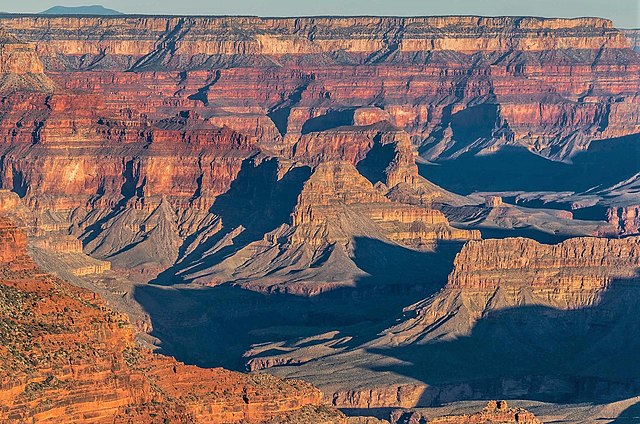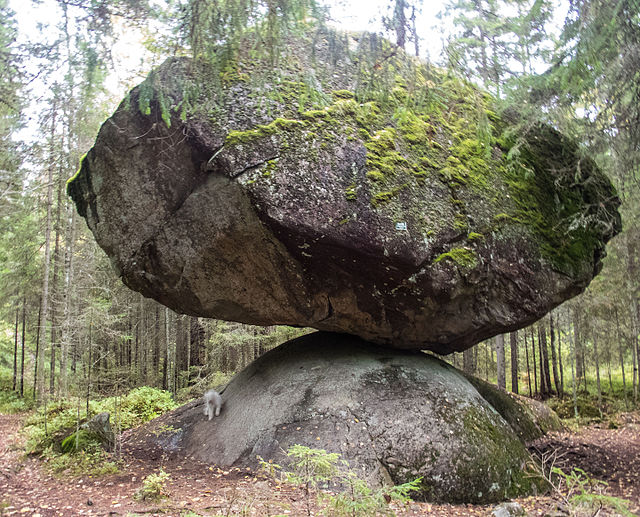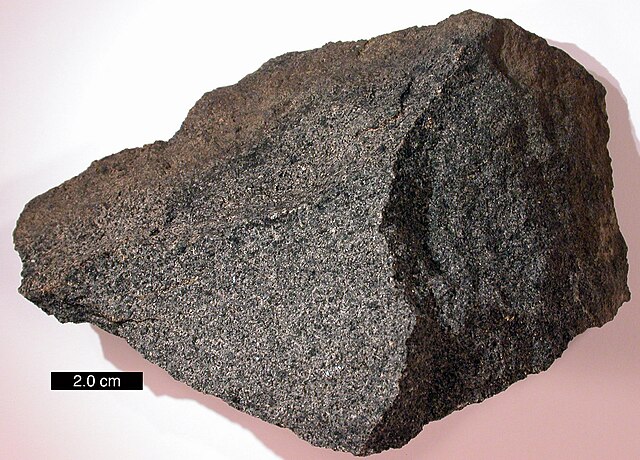Ore is natural rock or sediment that contains one or more valuable minerals concentrated above background levels, typically containing metals, that can be mined, treated and sold at a profit. The grade of ore refers to the concentration of the desired material it contains. The value of the metals or minerals a rock contains must be weighed against the cost of extraction to determine whether it is of sufficiently high grade to be worth mining and is therefore considered an ore. A complex ore is one containing more than one valuable mineral.
Manganese ore – psilomelane (size: 6.7 × 5.8 × 5.1 cm)
Lead ore – galena and anglesite (size: 4.8 × 4.0 × 3.0 cm)
Granitic pegmatite composed of plagioclase and K-feldspar, large hornblende crystal present. Scale bar is 5.0 cm
Piece of kimberlite. 11.1 cm x 4.5 cm
In geology, rock is any naturally occurring solid mass or aggregate of minerals or mineraloid matter. It is categorized by the minerals included, its chemical composition, and the way in which it is formed. Rocks form the Earth's outer solid layer, the crust, and most of its interior, except for the liquid outer core and pockets of magma in the asthenosphere. The study of rocks involves multiple subdisciplines of geology, including petrology and mineralogy. It may be limited to rocks found on Earth, or it may include planetary geology that studies the rocks of other celestial objects.
The Grand Canyon, an incision through layers of sedimentary rocks.
A balancing rock called Kummakivi (literally "strange stone")
Rock outcrop along a mountain creek near Orosí, Costa Rica.
Sample of igneous gabbro








